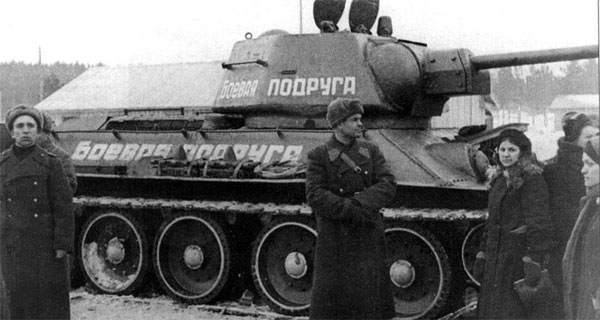|
Many soviet tankmen received highest military awards for courage and heroism during the Great Patriotic War. One of the most famous tankwomen was Maria Oktyabrskaya who had built a T-34 on her own savings and called it the Combat Girlfriend to become the driver of the machine. On June 23rd, 1941, Maria Oktyabrskaya together with her sister and other red commanders' families was evacuated from Chișinău to Tomsk, where she worked at a construction site. In the late summer of 1941, she received a killed-in-action notice on her husband, which read, “Regiment Commissar Ilya Oktyabrsky died a hero’s death on August 9th, 1941 in a battle in the fields of Ukraine”. Upon receipt of the news, Maria sold her house and all her valuables and used the proceeds to build the Combat Girlfriend. Her initiative was personally supported by Joseph Stalin, who sent her an encouraging letter. On May 3rd, 1943, Maria entered the Omsk Tank School to learn to drive a tank. In October, she was already driving her own machine at the Western Front. On January 17th, 1944, the Combat Girlfriend lost her left idler in a battle near the Krynki railway station in the Vitebsk Oblast. Driver Oktyabrskaya tried to fix it under heavy enemy fire, but was gravely wounded in the eye by a shell fragment. She was operated at a field hospital to be later transported to the front hospital where she received the Order of the Patriotic War of 1st Class. Her health was deteriorating. On March 15th, 1944, Maria Oktyabrskaya died in a Smolensk hospital to be buried there with due military honours in the Heroes' Memory Square. In August 1944, she was awarded a posthumous title of the Hero of the Soviet Union. For more information on war heroes visit Our Victory social project official website.
|

